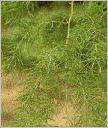GALEGA OFFICINALIS ,WITHANIA SOMNIFERA & ASPARAGUS OFFICINALIS
GALEGA OFFICINALIS
Galega was proved by Dr Carron de la Carriere. The whole plant of galega is taken for the preparation. It is covered by both :
Homeopathic pharmacopoeia of India & German Homeopathic Pharmacopoeia.
It contains alkaloid , saponnins, flavonoids, and tannins.
Homeopathic Uses:
1- It is used for backache, debility, anaemia,and impaired nutrition.
2- It is also used to increase the quantity & quality of milk in nursing women and also to improve appetite.
3- Galega has the ability to bring down the increased blood sugar levels.
Dosage : M.T. or higher
WITHANIA SOMNIFERA
Withania was introduced by Dr S.C.Ghose. A homeopathic tincture is made up from roots . It is covered by Homeopathic Pharmacopoeia of India.
Homeopathic Uses :
1- It is a great mental tonic . It acts like a magic in slowly advancing mental inertia , with loss of comprehension and expression. Likewise it is beneficial in loss of memory. In short Ashwanghdha Q is highly effacious in total or partial destruction of intellect , where the power of thinking , memory and expression is paralysed .
2- It is also indicated in impotency & all kind of seminal defficiencies.
3- General weakness , sterility, leucorrhoea, menstrual disorder, all are amenable to this drug.
ASPARAGUS OFFICINALIS (common garden asparagus)
Asparagus was proved & introduced by Dr Buchner. A homeopathic tincture is prepred from the young shoots. It is covered by Homeopathic pharmacopoeia of India & German Homeopathic Pharmacopoeia.
Homeopathic Uses:
1- It is used in affections of heart ; violent palpitation , pain in heart < on walking. Dyspnoea due to hydrothorax.
2- Difficult deglutition in hydrophobia .
3- Passage of stones in uine with severe toothache.
Thursday, July 12, 2007
Wednesday, September 27, 2006
COMMON INDIAN DRUGS & THEIR HOMEOPATHIC USES
There are number of Indian drugs which were commonly used in our ancient time & today in Ayurvedic system of medicine, now proved in homeopathy & giving great assistance in the speedy recovery . Further more it is a intresting fact that these drugs have a selective action & do not require totality of symptoms. Now in next few days I like to take number of common Indian plants & their homeopathic uses.
1. ABROMA AUGUSTA
Abroma augusta Linn.
(Ulat kambal)
Common Name : Ulat kambal
English : Devil's cotton
Hindi : Olat Kambal
Family : Sterculiaceae
Description
It is mostly found in the hotter parts of India. It has showy, deep scarlet flowers. Root bark is used for medicinal purposes. It is popular in the indigenous system as a good emmenagogue, and in the congestive and neuralgic variety of dysmenorrhoea. It has also proved to be an effective medicine for diabetes mellitus & inspidus.
Homoeopathic uses
Fragmentary provings were conducted by Dr. D.N. Ray of Calcutta in 1919 and Dr. Jugal Kishore of New Delhi in 1972. It has been subsequently proved by CCRH and has shown its affinity for female reproductive organs producing symptoma of dysmeSnorrhoea and leucorrhoea, which have been confirmed during verification trials too.
Diabetes mellitus - Urine profuse < at night and of high specific gravity. Excessive thirst with dryness of mouth. Patient suffers from insomnia and prostration, and patient is averse to do any physical and intellectual labour. Mentally patient is of irritable nature, forgetful and morose.
Dysmenorrhoea - Colicky pains in lower abdomen. Menses are irregular, lasting for short or long time. Blood is dark and clotted.
Bronchitis - Pain in chest and sides on coughing. Cough < in the evening and during night. Respiration is rapid & expectoration white.
Potency-6 & Q
2. AEGLE FOLIA
Aegle folia
(Bel leaves)
Common Name : Bel leaves
Hindi : Bel
Sanskrit : Bilwa, Tripatra
English : Bengal quince
Family : Rutaceae
Description
It is indigenous to India and is found wild all over sub-Himalayan forests. It is considered to be very auspicious and sacred to Hindus as it is offered to Lord Shiva. It is considered as an emblem of fertility.
The fruit of this tree is mainly used for treating diarrhoea & dysentery. Mostly half ripe fruit is used for medicinal purposes. Aegle marmelos is prepared from the fruit and Aegle folia is prepared from leaves of bel plant.
Homoeopathic uses
Like Aegle marmelos this drug has also been found effective in gastro-intestional affections particularly dysentery & piles.
Dysentery-Flatulent colicky pains with loose mucoid stool & mixed with blood. Urga starts soon after taking food. Pain griping in abdomen > passing flatus.
Piles- Blind, painful with itching. Constipation, stool hard & scanty. Persons suffering from indigestion with sour eructations.
Potency-Q & 6
3. AEGLE MARMELOS

Aegle marmelos (Linn.) Correa
(Bel fruit)
Common Name : Bel fruit
Sanskrit : Sriphala, Bilwa
Hindi : Bel
English : Bengal quince
Family : Rutaceae
Description
It is indigenous to India and is found wild all over sub-Himalayan forests. It is considered to be very auspicious and sacred to Hindus as it is offered to Lord Shiva. It is considered as an emblem of fertility.
The fruit is mainly used for treating diarrhoea & dysentery. Mostly half ripe fruit is used for medicinal purposes.
Homoeopathic uses
Conjunctivitis & Styes - Pain, stitching with sensation of dust particles in eyes with lachrymation. Stye, mostly over upper eyelids.
Rhinitis (Cold & Coryza) - With the symptoms of coryza, sneezing, redness of eyes and blockage of nose.
Coccygodynia - Pain in coccyx especially on getting up and better by walking.
Nocturnal seminal emission with amorous dreams.
Chronic dysentery - Alternate diarrhoea & constipation, stool, loose with mucus.
Potency-30 & Q



